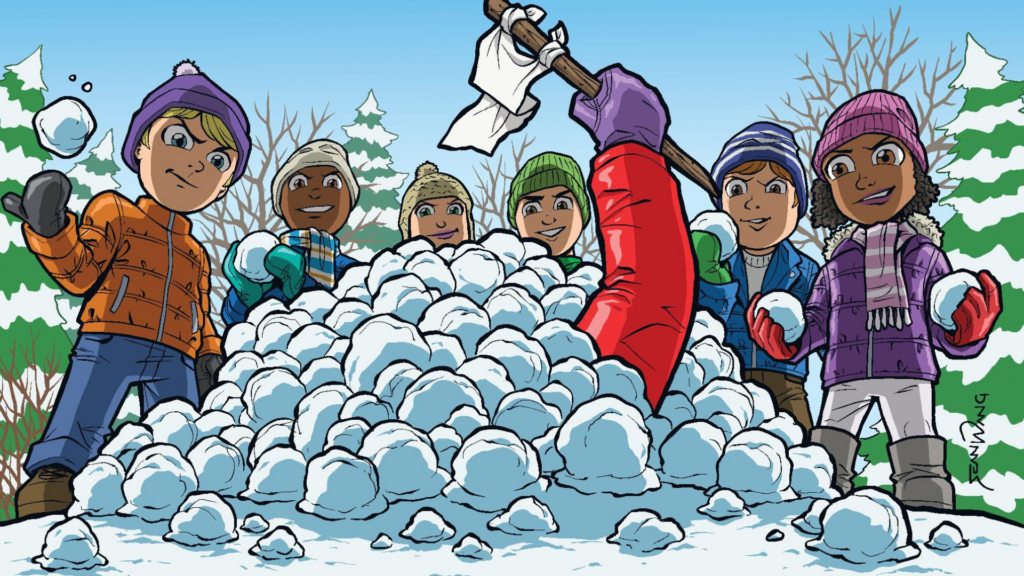By Matthew Dicks / Illustrated By Sean Wang
It’s hard to eat 28 cherry-flavored popsicles in one hour, and popsicles are one of my top 10 foods. But more than two dozen popsicles is a lot of popsicle. You get through the first five or even 10, and you think you’re doing okay, but then you start to feel this frozen ball of ice, artificial coloring and regret begin to form in your stomach. It starts to seep into every corner of your body and sap your strength and sanity. It’s not fun.
The average popsicle is about six fluid ounces. If you do the math, it works out to be about 168 fluid ounces of popsicles. To put that in perspective, the average human stomach can comfortably hold about 32 fluid ounces at a time, so 168 fluid ounces is a lot of popsicle.
The only reason I do this and enjoy doing it so much is because while I’m eating those 28 popsicles, I’m doing so in front of 28 students who don’t have any popsicles.
This is how my classroom is run. It’s based entirely on competition. My kids are divided into three teams, and they compete for points based solely on effort, kindness, organization, focus, direction following and cooperation. At the end of the week, the team with the most points is declared the winner and receives a privilege of some sort during the following week.
But there is a competition layered atop this one, and it’s a competition against me. I set a goal for a certain number of points, and after declaring a team winner, I add the points from all three teams. If their total exceeds my goal, the kids defeat me. If not, I defeat them.
This is a system that came about because of a boy named Ameet who, years and years ago, spotted the flaw in this system. Occasionally, I award all three teams the same number of points because they have all achieved a goal. One day, after awarding all three teams the same number of points, Ameet raised his hand, but it was one of those slow hand raises, as if to say, “Wait a minute…”
As an experienced teacher, I knew what was happening, so I said, “Put your hand down. I’ll get to you later.”
I approached Ameet and said, “What’s your problem?” But I knew what it was, of course.
He said, “If you give every team 1,000 points, it’s like giving all the team zero points. Nothing changes.”
I was ready for this, so I said, “What can I do to keep your mouth shut?”
Ameet considered the question for a moment, and then he said, “I want a Diet Coke.” I couldn’t, with a right mind, give Ameet a Diet Coke, so I made a counteroffer. “How about $2?” He took the money.
But I knew this was a temporary solution, and I needed to come up with something else; thus, this additional layer of competition was born. It worked beautifully because I ended up being the bad guy in the class. The enemy that unified the students. The common foe. I’m a bad guy who is so bad that if I win, I will eat 28 cherry-flavored popsicles in front of 28 kids while they don’t have any.
Or if the prize is extra recess and I win, I play kickball with their parents while they sit on their hands and watch the game.
And I promise them I will be mean and ruthless to them every week, making them crazy. It makes them want to crush me. But because I set the goal each week and award the points, the kids almost never win.
Despite my ruthlessness, I knew I needed to allow the kids to win every now and then, or they would lose buy-in. So, there was a year when I won 14 weeks in a row. It was time to let them win. And I came up with the best prize of all: the winner could throw snowballs at the loser. It was winter. There was about two feet of snow on the ground. It was good snowball-making snow. The prize was perfect.
Those kids had the best week ever. They worked harder than ever before. And at the end of the week, by some miracle of my design, they had won. I told them that they could choose six kids to throw snowballs at me while the rest watched. Right after recess, I stood up against a brick wall in front of six kids—they called themselves The Firing Squad—and this is when things went terribly wrong.
During recess, the class had made preparations. They had prepared an ammo dump of small, hardened ice balls and had buried them in the snow in a trench right in front of them.
The only rules I had set were these:
- You have one minute to throw as many snowballs as you’d like.
- You may not throw at my head.
But the kids had no intention of throwing at my head. They had already determined a far more sensitive area to target.
And so, when they threw the first me, I doubled over and thought, “That is not a snowball.” A handful of snowballs later, I was on the ground, writhing in pain, thinking, “At least it will stop now.” But it didn’t.
And I had a student teacher taking photos of the whole event because I told him it would be “legendary,” which it was, but for all the wrong reasons. He continued to take photos as the kids pummeled me again and again, doing nothing to stop them. The kids stood over me, pounding me with ice balls, and the class roared with laughter as I curled myself into a ball to protect myself as best as possible.
Then the timer went off, and it was over. The kids stopped. Stepped back.
I was really hurt. I was in a lot of pain.
After a moment, I looked up. They were still standing there, panting. I said, “What were you thinking? I’m the teacher.”
But I didn’t need them to answer my question. I knew the answer already: I had always promised that when I defeated them, I would be ruthless in my victory, and I always kept that promise.
They had learned from me. When given the chance, they had been as ruthless as possible.
So, I didn’t punish them. Instead, I printed photos of that moment and gave every student a copy. I celebrated their cruelty.
I don’t think I’ve respected children more than I did that day.
Matthew Dicks is an elementary school teacher, bestselling novelist and a record 55-time Moth Story SLAM champion. His latest books are Twenty-one Truths About Love and The Other Mother.
Sean Wang, an MIT architecture graduate, is author of the sci-fi graphic novel series, Runners. Learn more at seanwang.com.








More Stories
Sink or Swim
Spring Cleaning: Who is Really Doing the Cleaning?
What Has Happened to Our Children: Part 2